-
 Bitcoin
Bitcoin $85,236.8618
0.90% -
 Ethereum
Ethereum $1,615.9773
1.41% -
 Tether USDt
Tether USDt $0.9996
-0.02% -
 XRP
XRP $2.0883
0.66% -
 BNB
BNB $591.2394
-0.31% -
 Solana
Solana $138.7789
3.57% -
 USDC
USDC $0.9997
-0.02% -
 Dogecoin
Dogecoin $0.1571
-0.57% -
 TRON
TRON $0.2426
0.82% -
 Cardano
Cardano $0.6304
0.44% -
 UNUS SED LEO
UNUS SED LEO $9.3083
0.85% -
 Chainlink
Chainlink $12.9679
2.88% -
 Avalanche
Avalanche $20.2445
5.87% -
 Stellar
Stellar $0.2481
3.09% -
 Toncoin
Toncoin $2.9678
-0.99% -
 Shiba Inu
Shiba Inu $0.0...01230
0.25% -
 Hedera
Hedera $0.1667
0.48% -
 Sui
Sui $2.1626
1.33% -
 Bitcoin Cash
Bitcoin Cash $334.6897
-2.24% -
 Hyperliquid
Hyperliquid $18.0279
6.84% -
 Polkadot
Polkadot $3.8084
3.15% -
 Litecoin
Litecoin $76.0021
-0.32% -
 Bitget Token
Bitget Token $4.5255
2.93% -
 Dai
Dai $0.9999
-0.01% -
 Ethena USDe
Ethena USDe $0.9992
-0.02% -
 Pi
Pi $0.6488
4.29% -
 Monero
Monero $211.1432
-2.44% -
 Uniswap
Uniswap $5.3268
2.64% -
 Pepe
Pepe $0.0...07424
2.66% -
 OKB
OKB $50.9311
0.82%
What is the difference between gate.io position-by-position and full-position mode?
Gate.io offers position-by-position mode for individual trade control and full-position mode for holistic portfolio management, each suited to different trading strategies.
Apr 10, 2025 at 01:08 pm
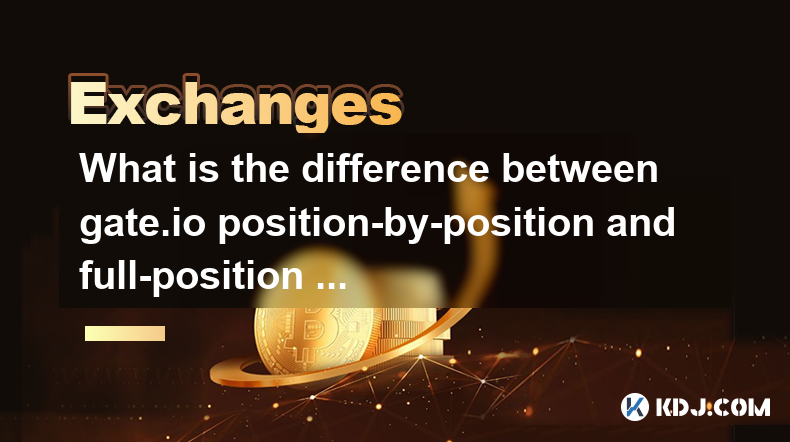
Introduction to Gate.io Trading Modes
Gate.io, a popular cryptocurrency exchange, offers traders various trading modes to suit different strategies and risk preferences. Among these, position-by-position mode and full-position mode are two key options that traders can choose from when engaging in futures trading. Understanding the differences between these modes is crucial for making informed trading decisions.
What is Position-by-Position Mode?
Position-by-position mode on Gate.io allows traders to manage each futures contract individually. This means that each position you open is treated separately, and the margin requirements and potential profits or losses are calculated for each position independently. This mode is particularly useful for traders who want to have more control over their individual trades and manage risk on a per-position basis.
In this mode, if you open multiple positions, each position will have its own margin requirement. For example, if you open a long position on Bitcoin and a short position on Ethereum, the margin required for each position will be calculated separately. This allows you to close or adjust each position without affecting the others, providing greater flexibility in managing your portfolio.
What is Full-Position Mode?
Full-position mode, on the other hand, treats all your open positions as a single, unified position. In this mode, the margin requirements and potential profits or losses are calculated based on the net exposure of all your positions combined. This mode is suitable for traders who prefer a more holistic approach to managing their futures trading activities.
In full-position mode, if you have multiple positions open, the margin requirement is calculated based on the total net exposure. For instance, if you have a long position on Bitcoin and a short position on Ethereum, the margin requirement will be based on the net difference between these positions. This can be advantageous if your positions offset each other, potentially reducing the overall margin requirement.
Key Differences Between Position-by-Position and Full-Position Mode
The primary difference between position-by-position mode and full-position mode lies in how the margin requirements and risk management are handled. In position-by-position mode, each position is treated independently, allowing for more granular control over individual trades. In contrast, full-position mode treats all positions as a single entity, which can lead to different margin requirements and risk exposure.
Another significant difference is the impact on risk management. In position-by-position mode, you can close or adjust individual positions without affecting others, which can be beneficial for managing risk on a per-trade basis. In full-position mode, closing or adjusting one position can affect the overall net exposure and margin requirements, which may require a more strategic approach to risk management.
Choosing the Right Mode for Your Trading Strategy
Selecting between position-by-position mode and full-position mode depends on your trading strategy and risk tolerance. If you prefer to manage each trade individually and have more control over your risk exposure, position-by-position mode may be the better choice. This mode is ideal for traders who engage in multiple trades with different strategies and want to manage each position separately.
On the other hand, if you prefer a more streamlined approach to managing your futures positions and want to take advantage of potential margin savings from offsetting positions, full-position mode might be more suitable. This mode is beneficial for traders who have a more holistic view of their portfolio and want to manage their overall net exposure.
Practical Example of Using Position-by-Position Mode
To illustrate how position-by-position mode works, let's consider a practical example. Suppose you want to open two futures positions on Gate.io: a long position on Bitcoin (BTC) and a short position on Ethereum (ETH).
- Open the long position on BTC: You decide to buy 1 BTC futures contract at a price of $30,000. The margin requirement for this position is calculated based on the value of the BTC contract.
- Open the short position on ETH: You decide to sell 10 ETH futures contracts at a price of $2,000 each. The margin requirement for this position is calculated based on the value of the ETH contracts.
In position-by-position mode, the margin requirements for these two positions are calculated separately. If you want to close the BTC position, you can do so without affecting the ETH position, and vice versa. This allows you to manage each trade independently and adjust your strategy as needed.
Practical Example of Using Full-Position Mode
Now, let's consider how full-position mode would work with the same example of opening a long position on BTC and a short position on ETH.
- Open the long position on BTC: You buy 1 BTC futures contract at a price of $30,000.
- Open the short position on ETH: You sell 10 ETH futures contracts at a price of $2,000 each.
In full-position mode, the margin requirement is calculated based on the net exposure of both positions. If the value of the BTC position is $30,000 and the value of the ETH position is $20,000, the net exposure would be $10,000 ($30,000 - $20,000). The margin requirement would be based on this net exposure, potentially reducing the overall margin needed compared to position-by-position mode.
If you decide to close the BTC position, it would affect the net exposure and potentially change the margin requirement for the remaining ETH position. This interconnectedness requires a more strategic approach to managing your positions in full-position mode.
Frequently Asked Questions
Q: Can I switch between position-by-position and full-position mode on Gate.io?
A: Yes, Gate.io allows you to switch between these modes. However, you need to close all your existing positions before switching to ensure a smooth transition. You can do this by navigating to the futures trading section, closing all open positions, and then selecting the desired mode from the settings.
Q: How does the margin requirement differ between position-by-position and full-position mode?
A: In position-by-position mode, the margin requirement is calculated for each position individually, based on the value of each contract. In full-position mode, the margin requirement is calculated based on the net exposure of all your positions combined, which can potentially reduce the overall margin needed if positions offset each other.
Q: Which mode is better for beginners?
A: For beginners, position-by-position mode might be more suitable as it allows for more straightforward risk management and control over individual trades. This mode helps new traders understand the impact of each position on their portfolio without the complexity of managing net exposure.
Q: Can I use both modes simultaneously on Gate.io?
A: No, you cannot use both modes simultaneously on Gate.io. You must choose one mode for your futures trading account and switch if needed by closing all existing positions first.
Disclaimer:info@kdj.com
The information provided is not trading advice. kdj.com does not assume any responsibility for any investments made based on the information provided in this article. Cryptocurrencies are highly volatile and it is highly recommended that you invest with caution after thorough research!
If you believe that the content used on this website infringes your copyright, please contact us immediately (info@kdj.com) and we will delete it promptly.
- The Crypto Market Is Heating Up Again—and It's Not Just Bitcoin or Ethereum This Time
- 2025-04-20 05:35:12
- After years of regulation-by-enforcement, the SEC is now open to public input on crypto policy
- 2025-04-20 05:35:12
- Bitcoin (BTC) Prices Hold Steady Near $83,200 as Thousands Protest Against Trump
- 2025-04-20 05:30:12
- While the Crypto Market Oscillates Without a Clear Direction, Some Internal Dynamics Are Reigniting Tensions
- 2025-04-20 05:30:12
- XploraDEX Presale Enters Its Final 48 Hours, with the Energy Electric Across the XRP Community
- 2025-04-20 05:25:12
- Justin Sun Hints at TRX ETF on SEC Website, Sparking Crypto Community Excitement
- 2025-04-20 05:25:12
Related knowledge
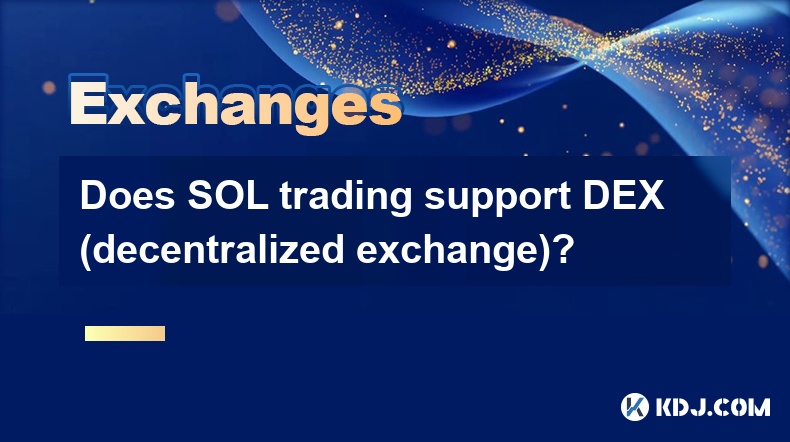
Does SOL trading support DEX (decentralized exchange)?
Apr 19,2025 at 05:21am
Solana (SOL), a high-performance blockchain platform, has gained significant attention in the cryptocurrency community for its fast transaction speeds and low fees. One of the key aspects that traders and investors often inquire about is whether SOL trading supports decentralized exchanges (DEXs). In this article, we will explore this topic in detail, p...
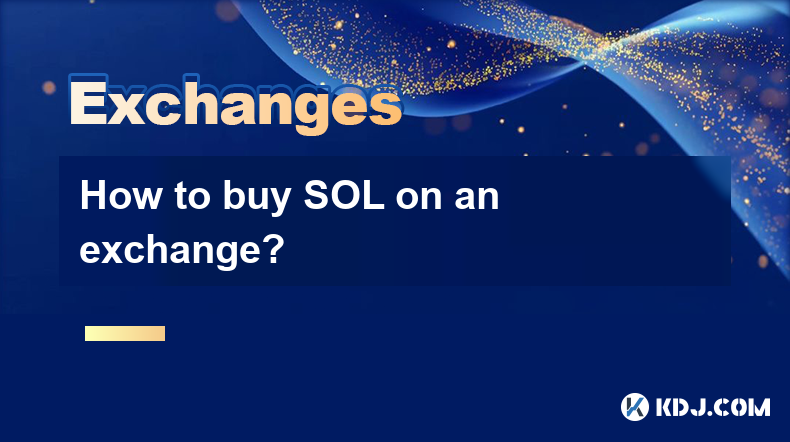
How to buy SOL on an exchange?
Apr 20,2025 at 01:21am
Introduction to Buying SOL on an ExchangeSOL, the native cryptocurrency of the Solana blockchain, has garnered significant attention in the crypto world due to its high throughput and low transaction costs. If you're interested in adding SOL to your investment portfolio, buying it on a cryptocurrency exchange is one of the most straightforward methods. ...
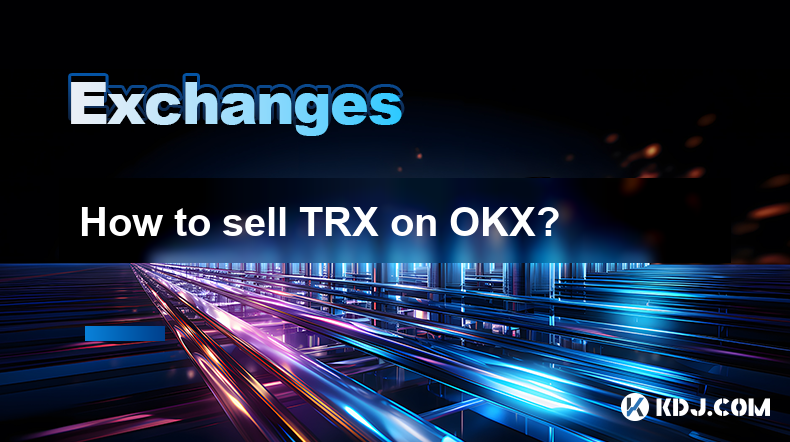
How to sell TRX on OKX?
Apr 18,2025 at 11:07pm
Selling TRX on OKX is a straightforward process that can be completed in a few simple steps. This article will guide you through the entire process, ensuring that you understand each step thoroughly. Whether you are a beginner or an experienced trader, this guide will help you navigate the OKX platform with ease. Preparing to Sell TRX on OKXBefore you c...
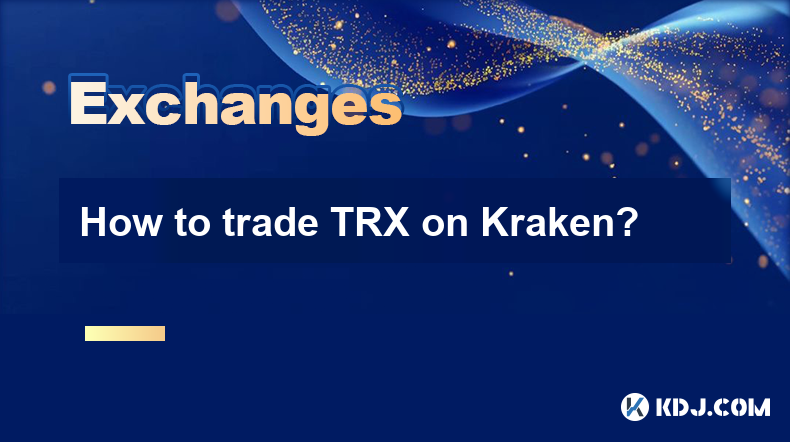
How to trade TRX on Kraken?
Apr 19,2025 at 02:00am
Trading TRX on Kraken involves several steps, from setting up your account to executing your first trade. Here's a detailed guide on how to get started and successfully trade TRX on the Kraken platform. Setting Up Your Kraken AccountBefore you can start trading TRX on Kraken, you need to set up an account. Here's how to do it: Visit the Kraken website a...
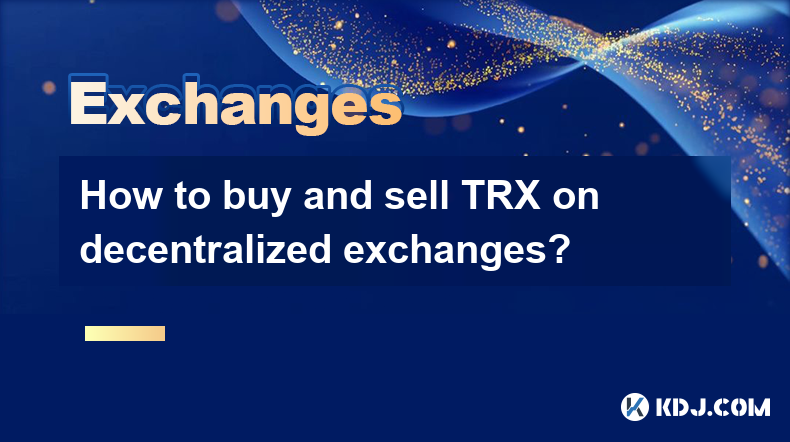
How to buy and sell TRX on decentralized exchanges?
Apr 18,2025 at 08:08pm
Introduction to TRX and Decentralized ExchangesTRX, or Tron, is a popular cryptocurrency that aims to build a decentralized internet and entertainment ecosystem. Decentralized exchanges (DEXs) offer a way to trade cryptocurrencies like TRX without the need for a central authority, providing greater privacy and control over your funds. In this article, w...
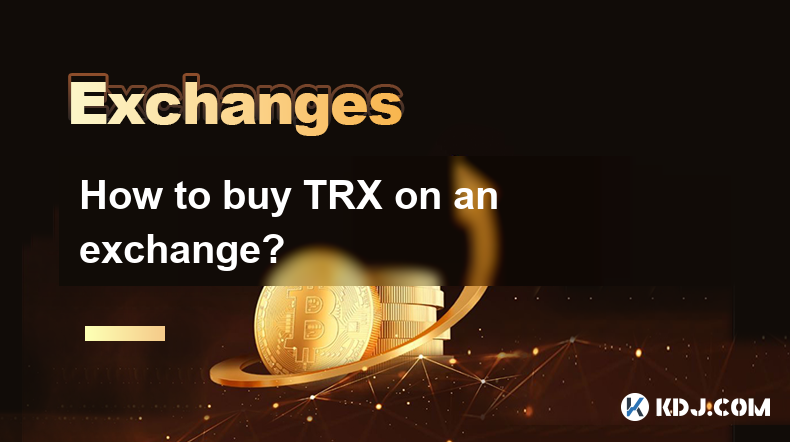
How to buy TRX on an exchange?
Apr 19,2025 at 12:08pm
Buying TRX, the native cryptocurrency of the Tron network, on an exchange is a straightforward process that involves several key steps. This guide will walk you through the process of purchasing TRX, ensuring you understand each step thoroughly. Choosing a Reliable ExchangeBefore you can buy TRX, you need to select a reputable cryptocurrency exchange th...

Does SOL trading support DEX (decentralized exchange)?
Apr 19,2025 at 05:21am
Solana (SOL), a high-performance blockchain platform, has gained significant attention in the cryptocurrency community for its fast transaction speeds and low fees. One of the key aspects that traders and investors often inquire about is whether SOL trading supports decentralized exchanges (DEXs). In this article, we will explore this topic in detail, p...

How to buy SOL on an exchange?
Apr 20,2025 at 01:21am
Introduction to Buying SOL on an ExchangeSOL, the native cryptocurrency of the Solana blockchain, has garnered significant attention in the crypto world due to its high throughput and low transaction costs. If you're interested in adding SOL to your investment portfolio, buying it on a cryptocurrency exchange is one of the most straightforward methods. ...

How to sell TRX on OKX?
Apr 18,2025 at 11:07pm
Selling TRX on OKX is a straightforward process that can be completed in a few simple steps. This article will guide you through the entire process, ensuring that you understand each step thoroughly. Whether you are a beginner or an experienced trader, this guide will help you navigate the OKX platform with ease. Preparing to Sell TRX on OKXBefore you c...

How to trade TRX on Kraken?
Apr 19,2025 at 02:00am
Trading TRX on Kraken involves several steps, from setting up your account to executing your first trade. Here's a detailed guide on how to get started and successfully trade TRX on the Kraken platform. Setting Up Your Kraken AccountBefore you can start trading TRX on Kraken, you need to set up an account. Here's how to do it: Visit the Kraken website a...

How to buy and sell TRX on decentralized exchanges?
Apr 18,2025 at 08:08pm
Introduction to TRX and Decentralized ExchangesTRX, or Tron, is a popular cryptocurrency that aims to build a decentralized internet and entertainment ecosystem. Decentralized exchanges (DEXs) offer a way to trade cryptocurrencies like TRX without the need for a central authority, providing greater privacy and control over your funds. In this article, w...

How to buy TRX on an exchange?
Apr 19,2025 at 12:08pm
Buying TRX, the native cryptocurrency of the Tron network, on an exchange is a straightforward process that involves several key steps. This guide will walk you through the process of purchasing TRX, ensuring you understand each step thoroughly. Choosing a Reliable ExchangeBefore you can buy TRX, you need to select a reputable cryptocurrency exchange th...
See all articles























































































